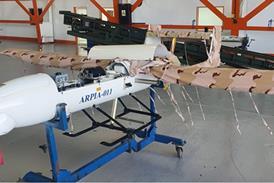FlightGlobal is the global aviation community’s primary source of news, data, insight, knowledge and expertise. We provide news, data, analytics and advisory services to connect the aviation community globally and help organisations shape their business strategies, identify new opportunities and make better decisions faster.
Breaking the monopoly
With four aggressive newcomers - Grand International Airways, Cebu Pacific, Air Philippines and Star Asia Airways - already flying, the Manila-based flag appears under siege. Two others, Asian Spirit and Corporate Air, want to add even more spice to the airline smorgasbord. Nor is the threat purely domestic. GrandAir ...
Keep reading this article by becoming a FlightGlobal member now
PLEASE REGISTER FOR FREE OR SIGN IN TO CONTINUE READING

You have reached your limit of free articles for this period. Register for a FREE account to read this article and benefit from:
- Increased access to online news and in-depth articles from:
- FlightGlobal Premium covering the global aviation industry
- Airline Business providing insight for business leaders
- Weekly newsletters on topics across the industry




















